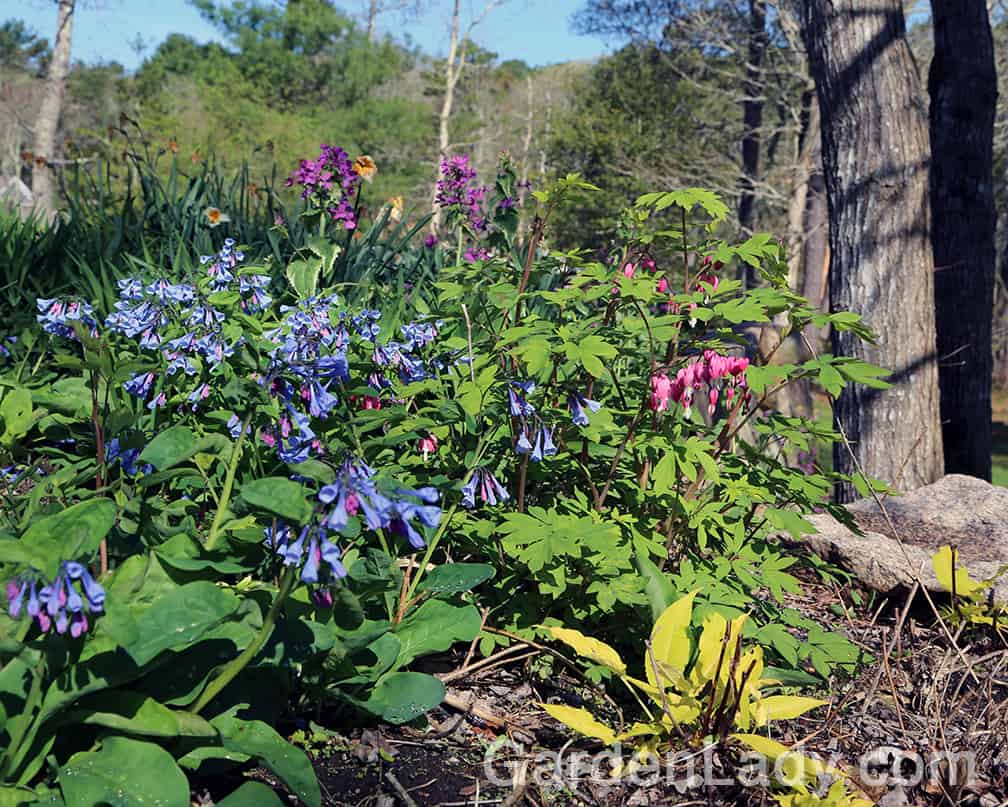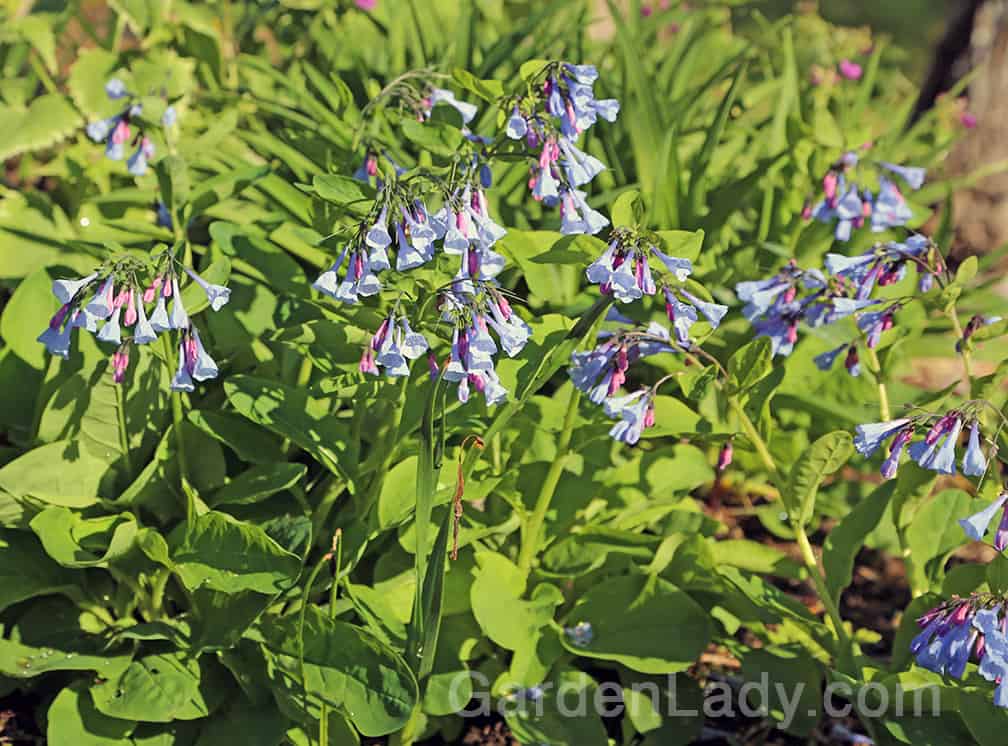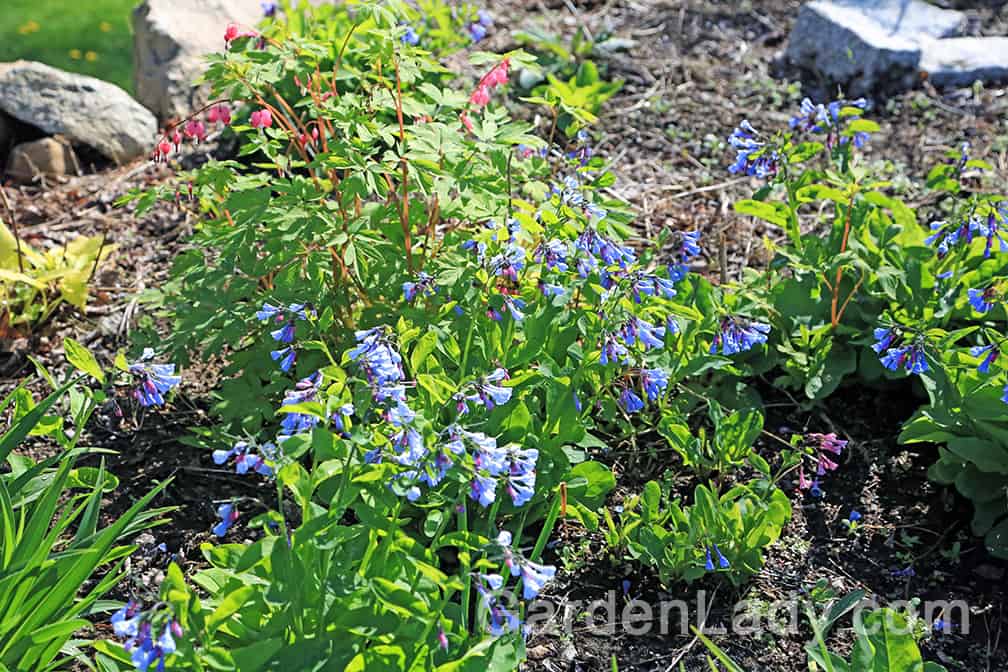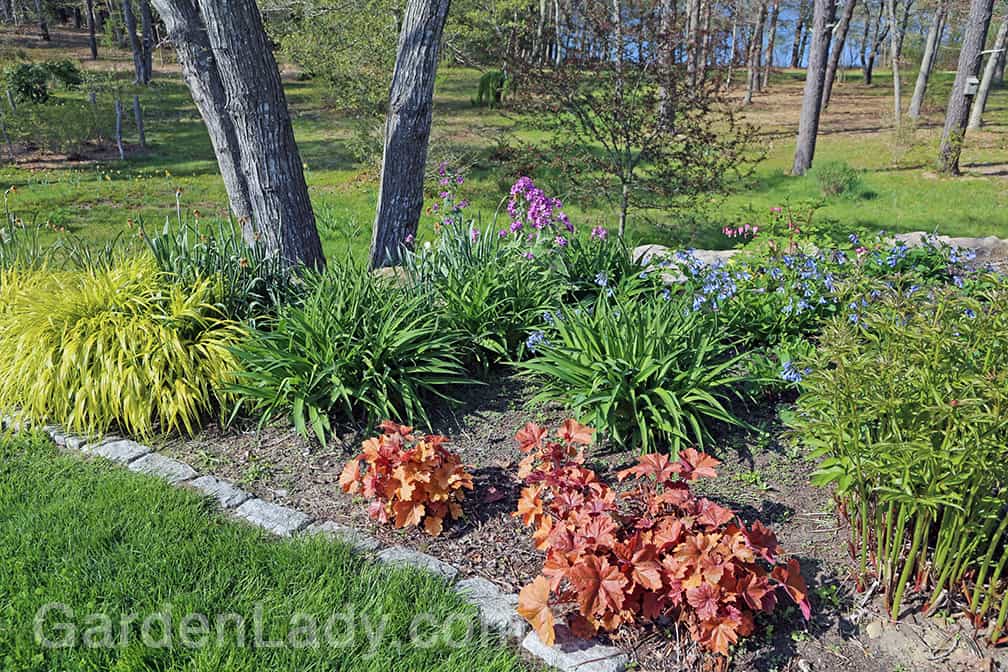Imagine: A low-growing plant for shady places that gently spreads in open areas without becoming a nuisance. And the flowers are a pure sky blue.
After a long winter when much of your yard has been brown and barren, spring has finally arrived. Every day brings new growth and color into your landscape. Bright yellow daffodil flowers reach toward the sun. Pink bleeding heart flowers dangle from curved stems like charms on a necklace. Purple Lunaria flowers are scattered through the emerging perennials, and the butter yellow hakon grass moves in the wind. And throughout this tapestry of fresh growth and color runs a river of sky blue flowers that have obligingly filled in the normally barren areas in the early season garden. The Virginia bluebells are back!
Name: Mertensia virginica aka Virginia bluebells
Type of Plant: This native perennial is frequently referred to as a “spring ephemeral” because the plant is only in the garden for that short season. Although Virginia bluebells self seed and reliably return every spring, they go dormant shortly after flowering. Hardy in Zone 3-8, this plant does best in part to full shade. This is a good bee and butterfly plant for the early spring.
Why I love this: It’s hard to find perennials that are sky blue. Lavender blue or purple are easy colors to find, but that pure, sky blue is rare. It’s also the perfect compliment to the yellows and pinks of other spring-flowering plants. Mertensia virginica self-seeds, and it mingles well with other perennials, growing in between the other plants and then disappearing as the other garden inhabitants grow larger.
A Word to the Wise: Because Mertensia virginica goes dormant shortly after it flowers and sets seed, it’s hard to find in garden centers beyond late May. Be sure to buy and plant it early in the season.

The blue Mertensia flowers are perfect with pink bleeding heart or tulips.

The flowers are pale blue and the buds are a bit lavender pink, giving the plant a two-toned effect when it’s in flower. These blooms don’t last long, but while they are there you’ll smile every time you see them.

This photo shows how the plant self-seeds in the garden. The larger, blooming plants are the older ones, while the smaller plants that are mostly leaves are newly seeded and will flower next year. This plant travels around gently, never aggressively, and appreciates rich, moist soil.

Virginia bluebells will fill in bare areas before the perennials are very high. Here they are beginning to scramble among yellow hakon grass, daylilies, peony foliage and the coral-leaved Heuchera.

I also love, love this plant. Except when it first comes out in the garden centers it really looks awful in the pot. But in the garden it is gorgeous. Every year I try to add at least 3 new plants. My oldest (3 year old plants) are about 2 feet wide and 18-24 inches tall. They flower for 3 to 5 weeks. I try to convince people to purchase this at the garden center but so many turn up their noses…their mistake. Because it is not a big seller can often be hard to find but so worth it. I have it planted in my shade garden for early color and the hostas manage to cover the waning foliage when the bluebells go dormant.
I agree, Judy – this is a plant that doesn’t show off well in the garden centers. I suspect that the main way people buy this is online when they are buying based on a photo of the plant not on how the plant-in-a-pot looks. It’s a shame that the plants that don’t show off well in the garden centers are likely to fall away from the marketplace. Dictamnus and Kirengeshoma, along with Virginia bluebells, come to mind.
I’m glad to know what this plant is as it is in my garden! I believe I got it years ago when my Mother and I were visiting Monticello-good memories. Thanks